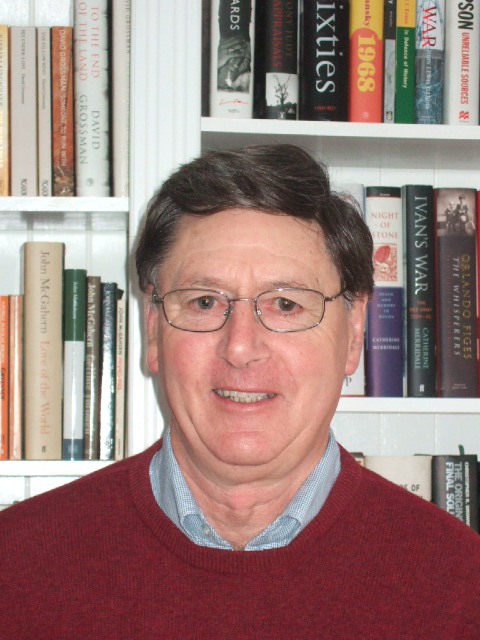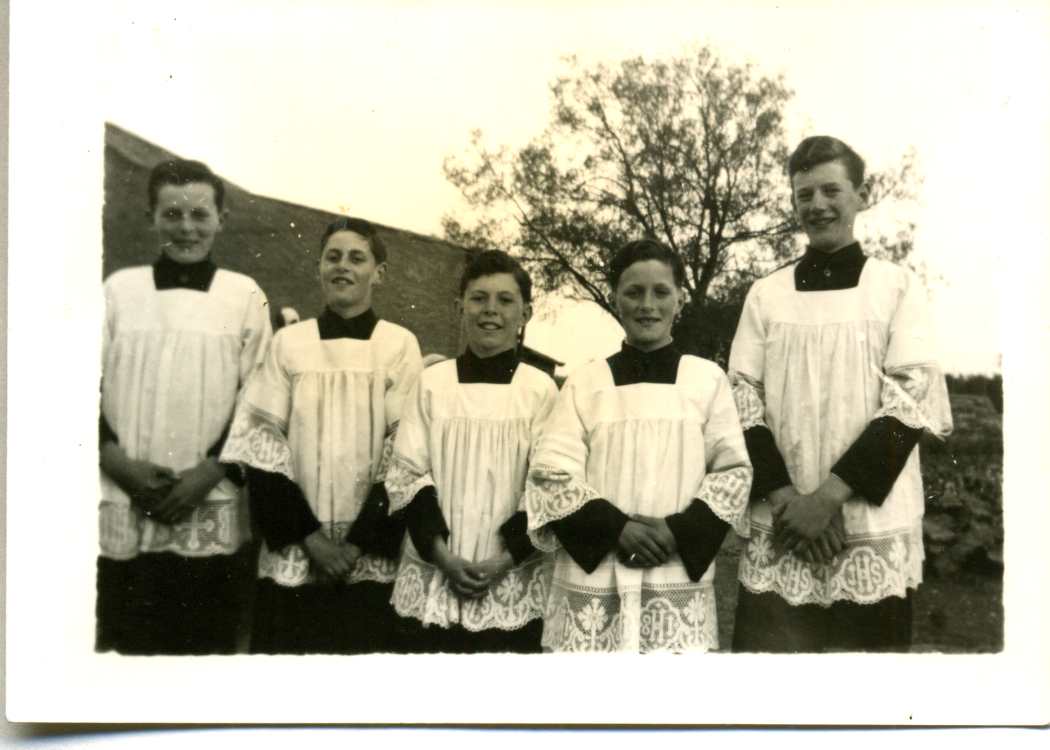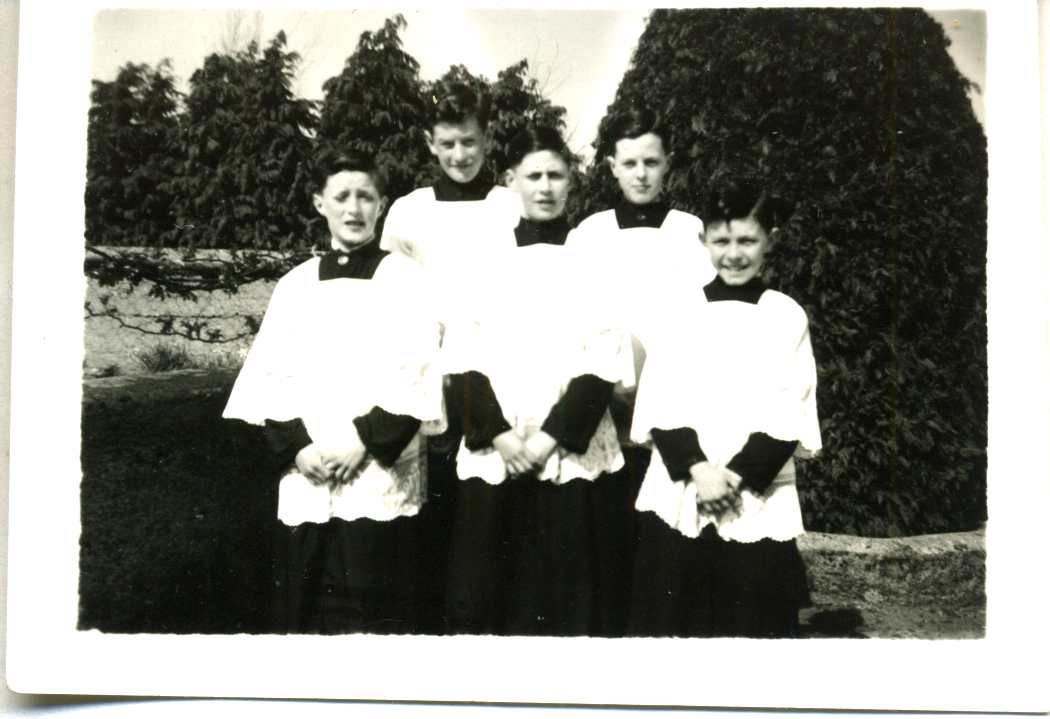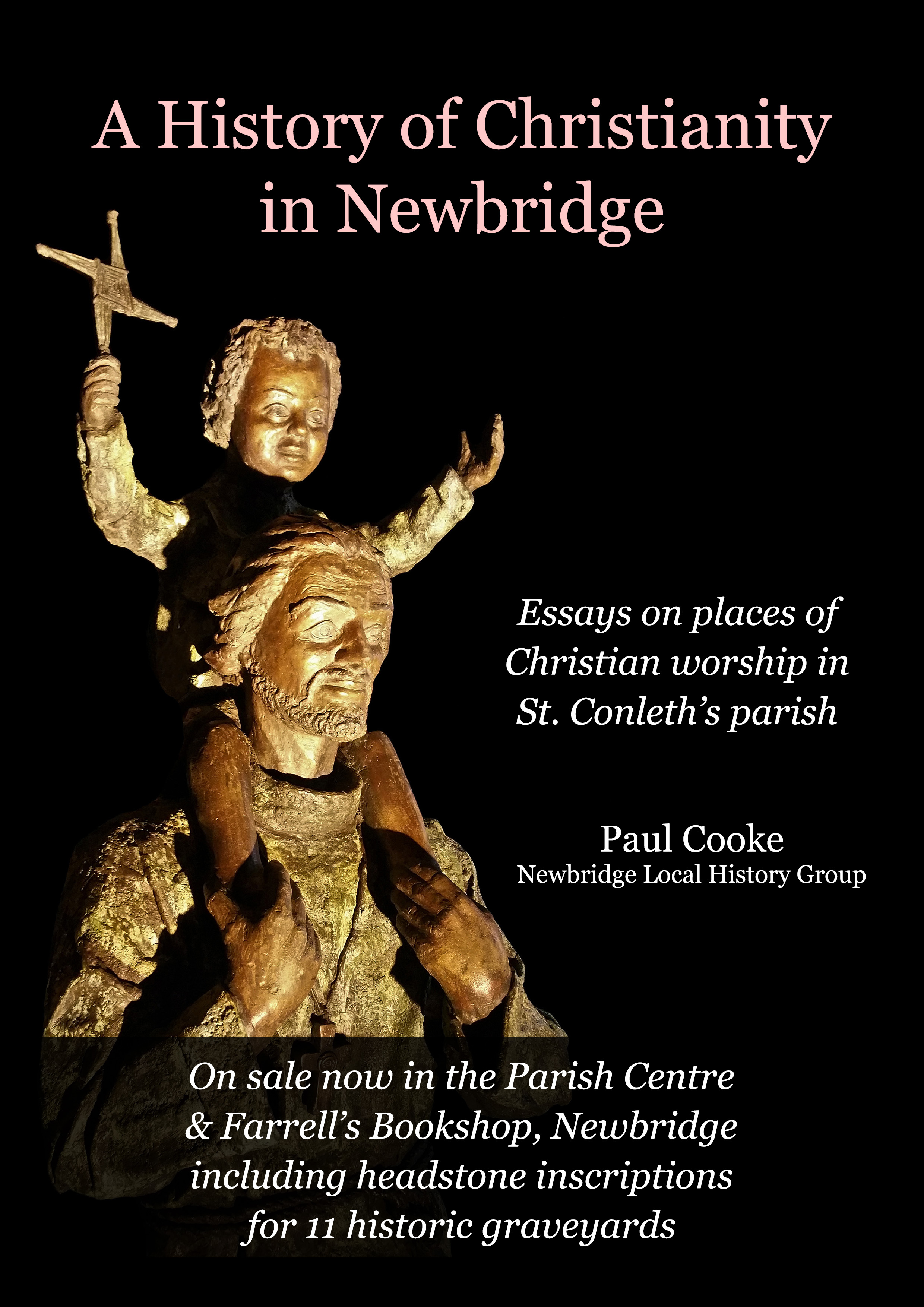Frank Boland: memories of an Altar Boy, 1951-57.
Et introibo ad altare Dei : memories of being an ALTAR SERVER (1951 – 1957)
I was recruited as an altar server for St. Conleth’s Parish Church in 1951 when I was in 2nd class of the Boys’ Patrician School. At that time, 2nd class was operating in a downstairs room in what is now the Parish Centre. Bro. John, who taught me in 2nd class, was in charge of the servers, and all servers in those days were boys. 
Bro. John taught us the Latin responses, which was the language of the Mass then. It changed to the vernacular in 1963 following the 2nd Vatican Council. The short responses were no problem but the long winded ones such as the De Profundis at the end of the Mass were a different story. At Mass the responses at the De Profundis would start off well enough but would then develop into a bit of a mumble. All the other duties of the server at Mass, Benediction, funerals, weddings etc. were learnt on the job, where a ‘master and apprentice’ system applied. The priests for whom I regularly served were Dr. Miller P.P. (later Mgr.) and the curates Frs. Hughes, Ryan, O’ Gorman and McNally.
A special rigout – white surplice, black soutane and black runners -- was required and supplied at our own expense. My surplice and soutane were made by my Auntie Mai (Barry), who was accomplished at “dressmaking”. The runners, or slippers as they were called, were black and very light with a canvas top and thin rubber soles. They did not last too long if you wore them outside for other activities or on the way to the chapel, as the church was generally called then. The surplice was washed frequently and I remember my mother would starch it and it would be stiff for the first few wearings. It was a matter of pride to my mother that it be as white as possible. The soutane was black and made of lighter material and it came down to the ground. I can remember that you could trip up when getting up from a kneeling position at the altar as the bottom of the soutane could be over the heels of the slippers. There was a narrow carpet on part of the kneeling step but if you were off that you had to kneel on the hard cold marble.
There were four groups of servers with about 20 or more in each group. The groups were called A, B, C and D. I was in Group A. Fellow group members that I remember were Justin Brady, Vincent Brady, Brendan Hayes, Ger and William Murphy, Richie McLaughlin, Tony Collatin, my brother Brian and my cousins Michael Curran and Roger Barry; Dessie Maguire, Gerard and Joe Coogan, Andy and John Fitzpatrick (John eventually wore the uniform professionally and is currently the P.P. in Carbury), Joe Kearns, Tom Keogh, Christy Moore, Denis Fay, Andy Hogan, Gerry Moran, Barry Woodgate, Larry McCormack and Maxi McDonagh. When I started the “big lads” in our group were Alec Dunne, Tony Campbell, Jackie Hayes and Joe Grogan. Joe lived down the Riverside and was a neighbour of the sacristan, Paddy Cullen, and was well in with Paddy. He was even allowed to help in pulling the rope that rang the chapel bell in the tower.
Each group of servers was on duty for a full week every four weeks. The group was divided up to serve the 7:30 am and 8 o’clock Masses each weekday, and then came together to serve the allotted Mass on Sunday. You alternated the first and second Masses from one duty week to the next one. First Mass at 7:30 am on a weekday was always celebrated by Mgr. Miller with only a few regulars in attendance. I remember Mrs. Cullen (Paddy’ wife) and also Mrs. McLoughlin from Eyre St. and the P.P.’s housekeeper, Mary McDonald as regulars, along with the Patrician Brothers and the Holy Family Nuns. For such an early start it was a bit of a strain as we would be fasting from the night before, which was the rule. Occasionally, a server might get weak during Mass especially if he had rushed to be in time. On Sunday there were three Masses and also Rosary and Benediction in the evening. You served a different Mass each Sunday, moving from the first at 8:00 am on your duty week up to evening Rosary and Benediction on the other weeks. On your duty week you also served all funerals and Rosary/Benediction that occurred that week. There was Rosary/Benediction each night during Lent, the month of May and Advent and also during the Missions (2 weeks every year).

[L to R: Tony White, Frankie Boland, Roger Barry, Brian Boland, Michael Curran.]
The various serving “jobs” at the different ceremonies were much sought after by all the servers. If you did not have a “job”, well then, all you did was kneel there and make the responses and this was pretty boring. The principal “job” at Mass was called Right with Left as the number two. They were named as such because you were positioned on the right and left of the priest at the steps of the altar. It should be borne in mind that back then the priest had his back to the congregation and said many of the prayers at the foot of the altar. The Right and Left “jobs” involved bringing the wine and water to the altar during the offertory. The Right server also rang the bell during the consecration (highlight task) and also took charge of the priest’s biretta (a sort of a square black cap worn by the priest coming and going from the sacristy to the altar). Another task that was allocated was the holding of the paten beneath the receiving communicant at communion time along the altar rails. Alec Dunne told me that he used to check if the men had shaved or not. The senior server allocated the “jobs”, with everyone getting their turn. Generally, the lads would not want to use up their entitlement too early in the week. I would take my turn at the start of the week (‘bird in the hand’ policy) and sometimes my turn would come again at the end of the week as some of the lads would not turn up. Sunday Mass had the above “jobs” as well but also the bonus of doing the collection. The church was divided into four areas for the collection. The two main aisles from the back (main door) were called the Mens and the Women’s. The Men’s was on the right hand side as you faced the altar and the Women’s on the left. The other two areas started at the two side altars and were called Miss Moran’s (the Blessed Virgin’s side) and The Brothers (Sacred Heart’s side), so named because that was where they always knelt, in the front rows. Miss Moran (Pidge) lived in Moorefield and worked in the Post Office.
Benediction offered some interesting “jobs”. One of those eagerly sought was the lighting of the candles on the altar. There would be a few long candelabra with several candles on each side and sometimes they would be very high up. One server lit each side and it was always a race to see who finished first. The server had to go into the sacristy to collect the long holder with the taper already lit by the sacristan, Paddy Cullen. Another prime “job” was the keeper of the thurible. This would have been lit by Paddy during the Rosary and it was the server’s task to keep it lighting during Benediction and spread the smell of the incense. The thurible required a certain amount of swinging but this could be overdone and end up badly. The ringing of the bell was also an attraction. The task of putting the cloak around the priest’s shoulders for the exposition of the monstrance could be difficult for a small server. Some of the servers also carried lighted candles in long holders during Benediction.

[L to R: Brian Boland, Michael Curran, Frankie Boland, Tony White, Roger Barry.]
We usually got notification of funerals at the morning Mass. I got my message mixed up once and came down to serve a non-existent funeral. I met Mgr. Miller outside the sacristy and he told me “that the man that Paddy (Cullen) thought was going to die did not die after all”.
Stations of the Cross were held during Lent and Holy Week. Three servers accompanied the priest to the stations around the church with the long cross and two candles in the long holders.
Weddings were greeted with anticipation as there was usually a donation for the servers. Generally, we would not know that there was going to be a wedding at the Mass until we came out on to the altar. The usual contribution would be a pound or 10 shillings. I can remember doing the division sums and coming up with one and eight pence for each of twelve. Some work had to done to get the requisite change for the divvy. Sometimes the contribution from the best man might be slow in coming, or not at all or less than expected and we would be casting aspersions on Paddy Cullen. Weddings were usually held at the 8 o’clock Mass. I only remember one exception and that was the wedding of Bunny Kavanagh which was held at 9 o’clock and William Murphy from the Naas Rd. and myself served it. Bunny was a renowned footballer for Sarsfields and the county, though I doubt that was the reason for the exception. As there were only two servers involved, I remember it being a good earner. Bunny later became the sacristan on Paddy Cullen’s retirement and served for many years.
Another welcome source of income was the daily serving of Mass for two “American” priests during the summer weeks. These priests were brothers of Mrs. Nolan of Eyre St. (now Rose Earley’s) and were home on holidays. Only one server was used for each of these Masses; they were sort of private and one of them was celebrated on one of the side altars. They paid up each morning and my memory is of 6 pence (a tanner) per day which was significant to a young lad in those days when you could get 10 sweets for a penny. Alec Dunne told me recently that he used to get half a crown (2 shillings and 6 pence) when he was on this duty in his day. I find this hard to believe and perhaps he was paid by the week. I used to spend 3 pence on the way home on ice cream, saving the balance for the rainy day.
The ceremonies at Easter/Holy Week and Christmas midnight Mass were highlights of the server’s year. The ceremonies at Easter/Holy Week were different from the usual Masses; there were fancy “cruet” sets for the water and wine, and different bell ringing equipment was also used. It was difficult to get a grip on these sets for the water and wine as there were small handles on them and they could cut into your fingers if you held them wrongly or for too long. The normal bell for ringing during Mass was replaced by a gong for Easter. This had to be struck near the bottom by hammer with a felt head to produce the required ‘bong’. Failure to connect at the right spot resulted in a bit of a dull sound, much to the merriment of the other servers. It was much easier with the normal bell as you only had to shake it. Midnight Mass on Christmas night was a great adventure. You were legitimately up and about late at night and you never knew who you might meet on the way home, provided “He” had not already visited Newbridge.
We also togged out for the various processions. There was the May procession around the nun’s garden; the Corpus Christi procession around the chapel grounds (all grass then) and I remember a huge procession up the town in the Marian Year,1954, because I got drenched in the rain. We carried special lanterns with red panes of glass for the Corpus Christi procession.
(I would welcome any input on the above article. Sometimes one’s memory can play tricks and names can be left out. So any clarifications will be welcomed. Hopefully others might be inspired to write their accounts as well).
Frank Boland (C) 2013.

